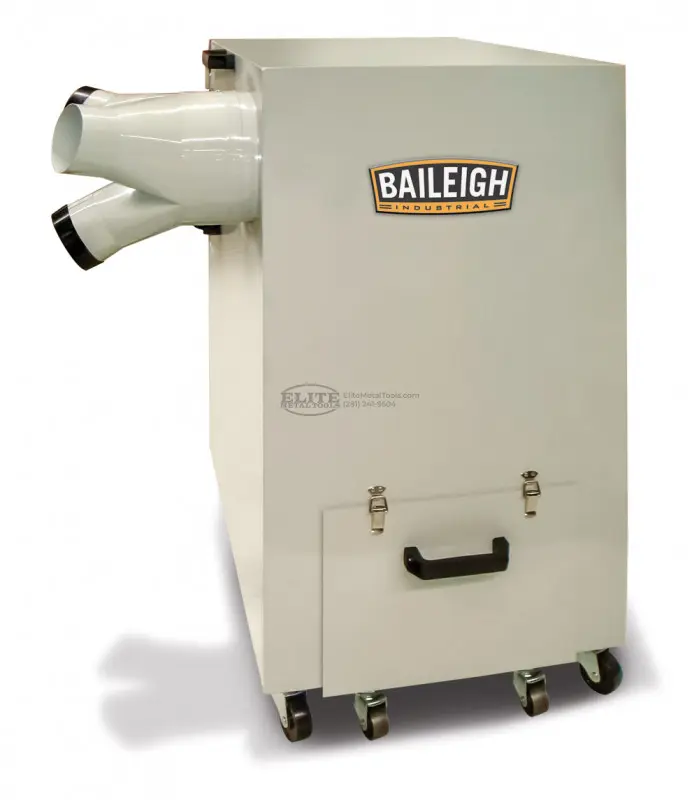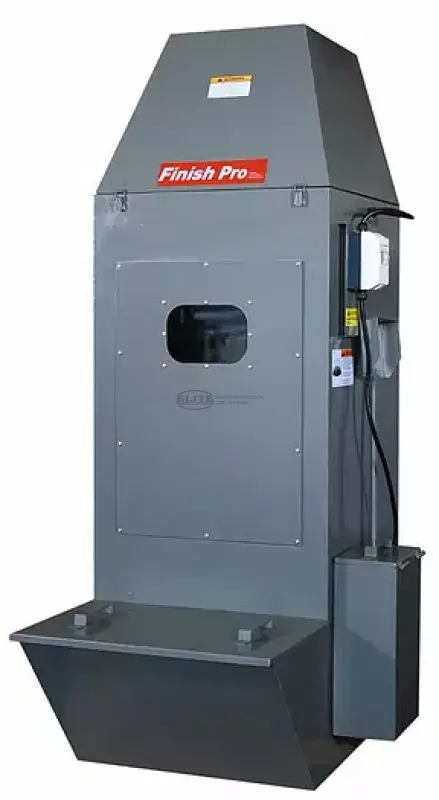Elite Metal Tools Articles
Industry news, tips, and updates on all things Elite Metal Tools
Metal Dust Collection - Dry Vs. Wet - Let's Learn About
Metal Dust Collection - Dry vs. Wet: A Comprehensive Comparison for Effective Industrial Dust Control
Introduction Metal dust generated in industrial processes poses significant health and safety risks, as well as potential fire and explosion hazards. Implementing an efficient dust collection system is crucial for maintaining a clean and safe work environment. In this article, we will explore the two primary types of metal dust collection systems: dry and wet. We will compare their features, benefits, limitations, and applications to help you make an informed decision when selecting the most suitable system for your industrial needs.
Importance of Effective Metal Dust Collection Metal dust, a byproduct of various industrial processes such as metalworking, machining, and welding, can lead to severe health issues when inhaled by workers. Additionally, certain metal dust particles possess the potential for combustion and explosion, further emphasizing the importance of effective dust collection systems. By efficiently capturing and removing metal dust from the air, we can safeguard workers' health and reduce the risk of workplace accidents.
Common Types of Metal Dust Different types of metals produce varying dust particles with unique properties. Steel, aluminum, titanium, and other metals have distinct characteristics, including particle size, shape, and chemical composition. Understanding these differences is crucial for selecting the appropriate dust collection system tailored to specific metal dust types, as each may require specialized collection methods and equipment.
Key Components of a Metal Dust Collection System A well-designed metal dust collection system consists of essential components that work together to effectively capture and remove airborne dust particles. These components include capture hoods, ductwork, filtration units, and proper disposal methods. The capture hood ensures efficient dust capture at the source, while the ductwork transports the collected dust to the filtration unit, where it is filtered before safe disposal.
Dry Metal Dust Collection Systems Dry dust collection systems are commonly employed for capturing and controlling metal dust. Different types of dry collection methods include cartridge filters, cyclone separators, and baghouses. Cartridge filters are suitable for fine dust particles, while cyclone separators utilize centrifugal force to separate dust from the air stream. Baghouses utilize fabric bags to filter and collect dust. Each type has its advantages and limitations in terms of efficiency, maintenance requirements, and suitability for different applications./product/9298
Wet Metal Dust Collection Systems Wet dust collection systems offer an alternative approach to controlling metal dust. These systems rely on liquid agents, such as water or other specific solutions, to capture and suppress dust particles. Wet collection methods include wet collectors and wet scrubbers. Wet collectors utilize a water spray to capture dust particles, while wet scrubbers use liquid sprays to both capture and neutralize harmful particles. Wet systems are highly efficient in collecting and suppressing fine metal dust, but they require proper maintenance to prevent clogging and ensure effective operation./product/16121
Considerations for Choosing the Right System Selecting the appropriate metal dust collection system requires careful consideration of various factors. The type of metal dust, its volume, particle size, and the specific industrial process must all be taken into account. Additionally, budgetary constraints and regulatory compliance play significant roles in determining the most suitable system. Consulting with experts in the field can help assess the unique requirements of your industrial environment and guide you towards an optimal solution.
Best Practices for Metal Dust Collection To maximize the performance and longevity of your metal dust collection system, implementing best practices is essential. Proper system design, installation, regular maintenance, and monitoring are crucial to ensure efficient and safe operation. Regular inspections, filter replacements, and prompt troubleshooting of any issues are essential steps to maintain optimal performance and prevent system failures.
Industry Regulations and Compliance Various industry regulations, such as those set by the Occupational Safety and Health Administration (OSHA), govern the design, installation, and operation of metal dust collection systems. Compliance with these regulations is not only crucial for ensuring worker safety but also for avoiding legal implications. Understanding the specific requirements and implementing necessary measures to meet compliance standards is vital for any industrial facility.
Conclusion Efficient metal dust collection is paramount for maintaining a safe and productive industrial environment. By comparing dry and wet metal dust collection systems and understanding their features, benefits, and limitations, you can make an informed decision when selecting the appropriate system for your specific needs. Remember to consider factors such as the type of metal dust, volume, particle size, and regulatory compliance. By implementing an effective dust collection system, you can protect your workers, mitigate health risks, and enhance overall workplace safety.

